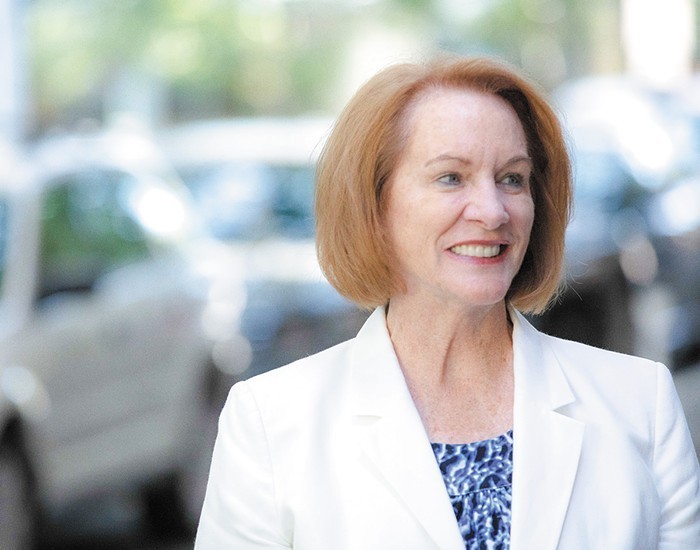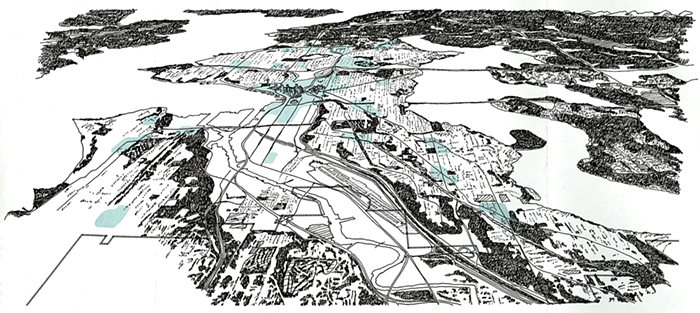
The deadly mass shooting that occurred on 3rd and Pine on Wednesday has generated an outrage in Seattle's mainstream press that's completely predictable. Seattle Times, for example, has on its main page a story about how downtown businesses are frustrated with "a problem that predates Wednesday’s shooting and that is making it harder and costlier to keep doing business downtown." Another story is about how the city has tried and failed to curb crime in that downtown area, which now has an Amazon office. And the paper's editorial board demands that Seattle's City Hall wake up from it's naive progressive dreams and get real about enforcing the law.
From the Seattle Times:
The incident was the act of criminals with a brazen disregard for bystanders. But Seattle’s political establishment shares some responsibility for allowing criminal activity along Third Avenue to fester and become a magnet for troublemakers. The establishment enables a justice system that allows criminals to repeatedly harm others with little consequence. City Hall hasn’t adequately prioritized the safety of people downtown and in other areas with serious, drug-related crime problems.
The only striking about these predictable stories is the absence of race. Let's look into this.
The men wanted in connection with this shooting, which killed one person and injured seven, Marquise Tolbert and William Ray Tolliver, are not white. And anyone familiar with this part of downtown (3rd and Pine; 3rd and Pike) knows that many of the men and women who "loiter" there are young and black. And the color of this group is all the more visible because there are not too many places in Seattle where young and black people openly gather.
For years, the city has tried get rid of these young black loiterers (they are coded as drug dealers and gang members). At one point, the McDonalds on the corner of 3rd and Pine even tried piping country music onto the street. When that did not work, it tried classical music. This approach was meant to work like those bird control spikes on the corner of buildings and the entrance of light rail stations. What the spikes did for the feet of birds, country and classical music would do to black ears. But it didn't work. They did not go away. They were still there even on Wednesday.
Over the years, the city has changed dramatically around this "seedy" part of downtown, which is the street calls "the blade." The black community was forced out of the Central District, Paul Allen's bulldozers flattened black Seattle's former downtown (23rd and Jackson), Amazon poured billions into new office buildings, and developers exclusively built apartments for the ultrarich. In the midst of all these developments, 3rd and Pine become something of an island. Much of the outrage directed at the shooting on Wednesday concerns the fact that this island of criminality (black youth) has been permitted to persist in the first place. Black youth are no longer congregating at 21st and Madison (formerly the location of Deano's Cafe & Lounge—a place Yelp described as the "Hottest crack spot in town!"), they have been removed from 23rd and Union, they are moving from 23rd and Jackson. Why on earth are they allowed to be at the center of the city, the center of some of the most spectacular real estate investments in the history of the state?
Someone will have to answer for this anomaly.
But, of course, none of this will address the deeper problems of poverty and displacement and racism in the city. Indeed, there can be no deeper problem according to Seattle Times' editorial board, which speaks for many local and regional whites. These young black man, who are drug dealers or in a gang, harmed and even killed law-abiding citizens. How can you argue with that? The facts are plain. It's not even about race. It's about cracking down on crime, and keeping criminals where they always belong, in prison.
But what other solution is available, when one considers what's at stake for many of the city's leaders in City Hall and commerce chambers ("many of the stores, restaurants and offices in the heart of the city’s shopping and tourist district were open for business")? And how can you even talk about increasing funding for crucial high school programs, or building really affordable homes in the city, and improving all-round social services at a time like this? A 9-year-old boy was shot. A woman is dead. The city has to do something now, and that means more police, stronger enforcement of the law on the street, and harder judgements in the courts. Yet, that solution is not just for the now. It has been and will continue to be the only solution that's available to City Hall and citizens.
When I looked into this a while back, I learned the idea dated back to the Sidran days. Shocking (or not) how familiar this sounds: pic.twitter.com/xqQHzwJC2O
— Heidi Groover (@heidigroover) January 24, 2020
Dealing with poverty, which is the root of so much criminal activity and drug-related despair, has always been and must always be a solution for a tomorrow that will never become anything more than just tomorrow.
I want to conclude by giving you a sense of the complexity of that seedy stretch of street. About seven years ago, I walked by the McDonalds on 3rd and saw something that broke my heart. It was the face of a young black man who had once been a student of mine at an area high school. The class I taught included reading Their Eyes Were Watching God, which he loved, particularly the richness of Zora Neale Hurston's black English. I really saw a literary mind in him, and wanted him to study black American novels. But he always struggled to make it to class. Something was always going down at his home. Some days his eyes would be red from a lack of sleep. And then I saw him there, five years after high school. He was in his early 20s and in the middle of the blade. And he saw me looking at him and he knew who I was and what I was thinking. What was he doing here? You. So bright. You. Once filled with so much promise. What broke you like this? He tore his eyes away from me and began staring at ads plastered on a tobacco store, and I walked by him without saying a word. I hope he is still alive and not in prison.














